Submitted by WA Contents
gad's experience center in Lijiang features "walkable roof" made from recycled wood pieces
China Architecture News - Feb 01, 2021 - 12:59 9182 views

gad has built an experience center featuring a "walkable roof" with undulating, cloud-like form, the roof has been made from recycled wood pieces collected from the site.
Named Hylla Cloud Nature Experience Center, the multi-purpose experience center (also known as the Red House) is located on the gentle slope of Yanjiao Village, Baisha Town, Lijiang, Yunnan Province, China.
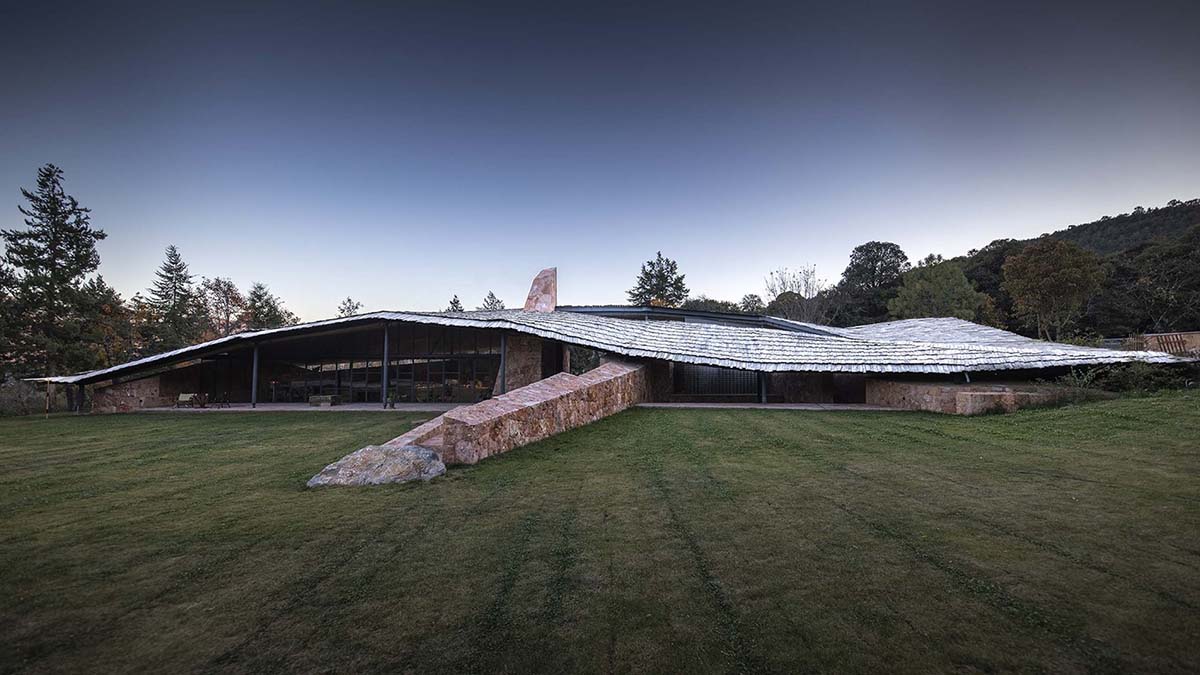
Image © Jie Pan
Covering a total of 538-squae-metre area, the program of the center incorporates a rest and activity area, with a bathroom and storage room.
It also includes lounge area has been designed as an open space, with a cafe, a bar, a retail center, or a sharing venue which are all can be arranged according to the future demands.
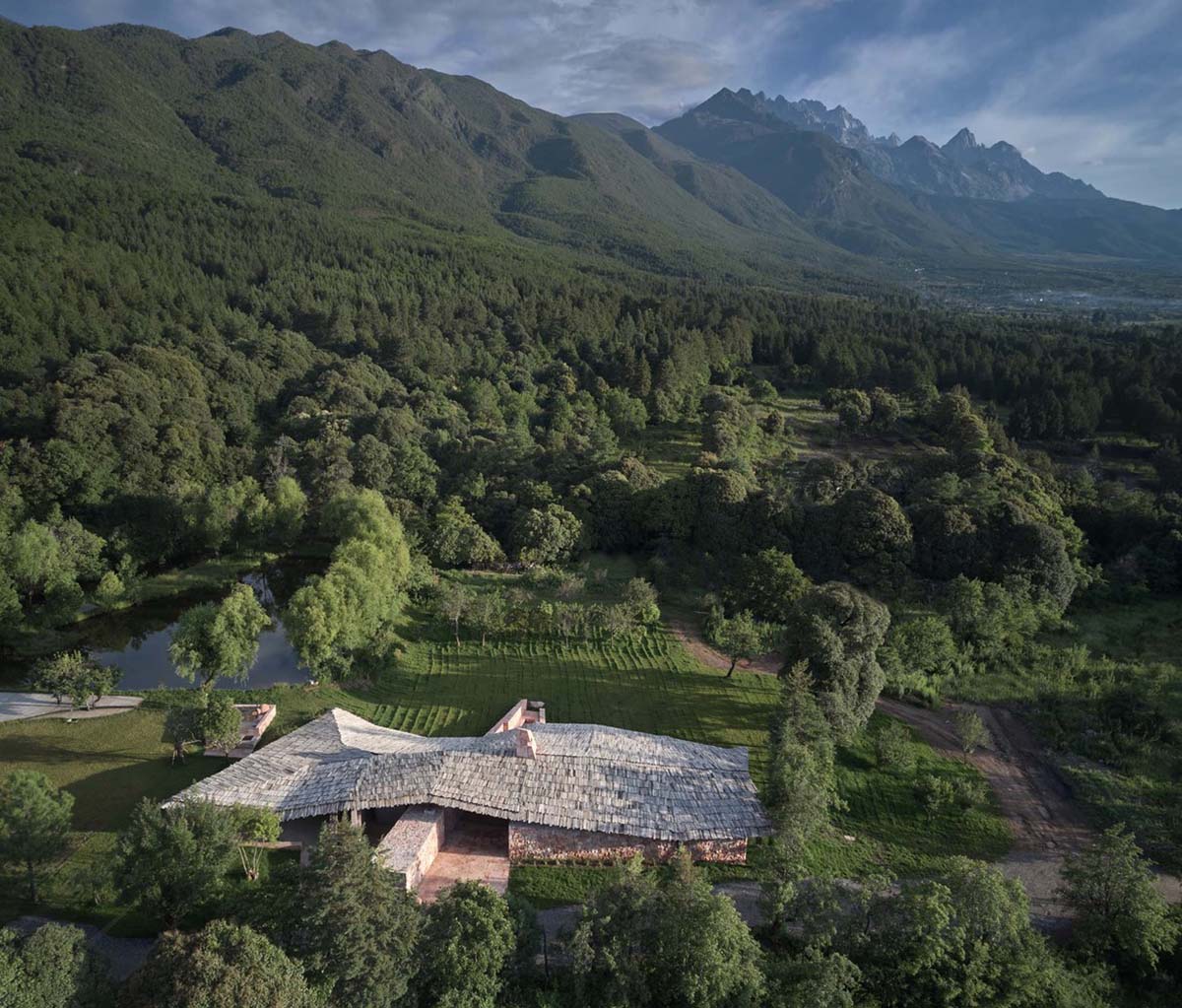
Image © Guangkun Yang
The building has been designed as a highly flexible space by referring to local craftsmanship, texture and materials. An expansive cloud-like roof covers the building as a big shelter, but it marks the building from afar.
"It is a natural living scene experience place in Hylla Land. On one side, it looks up at the snow-capped mountains and glaciers, on another side; it overlooks the village and countryside," said gad.
"Except for one side of the countryside, the other three sides are closely surrounded by the complete canopy line extending from Mount Zhishan."
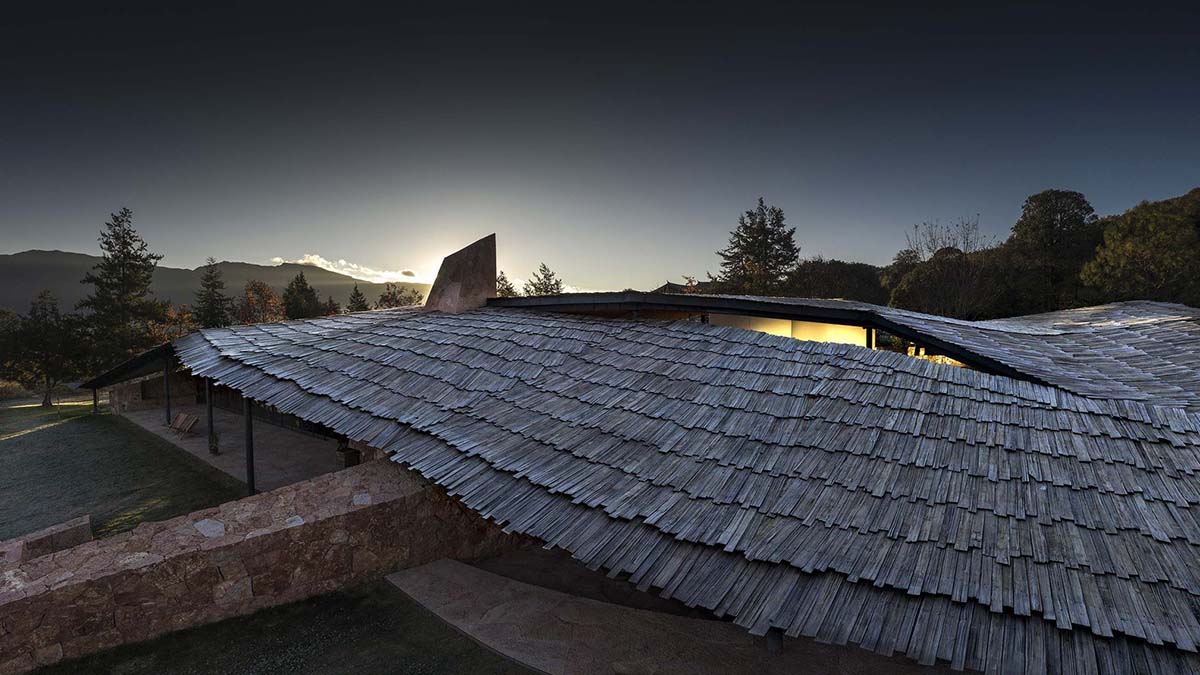
Image © Jie Pan
"In front of the project, there are lawns, water pools, and trees, high and low, successively arranged; behind the house is a natural canal, across the water from the main building of the hotel."
For this project, the architect "uses his own unique interpretation of the "local", not restricted to the existing experience and the public label, which have caused a "casual" building to break through the ground."
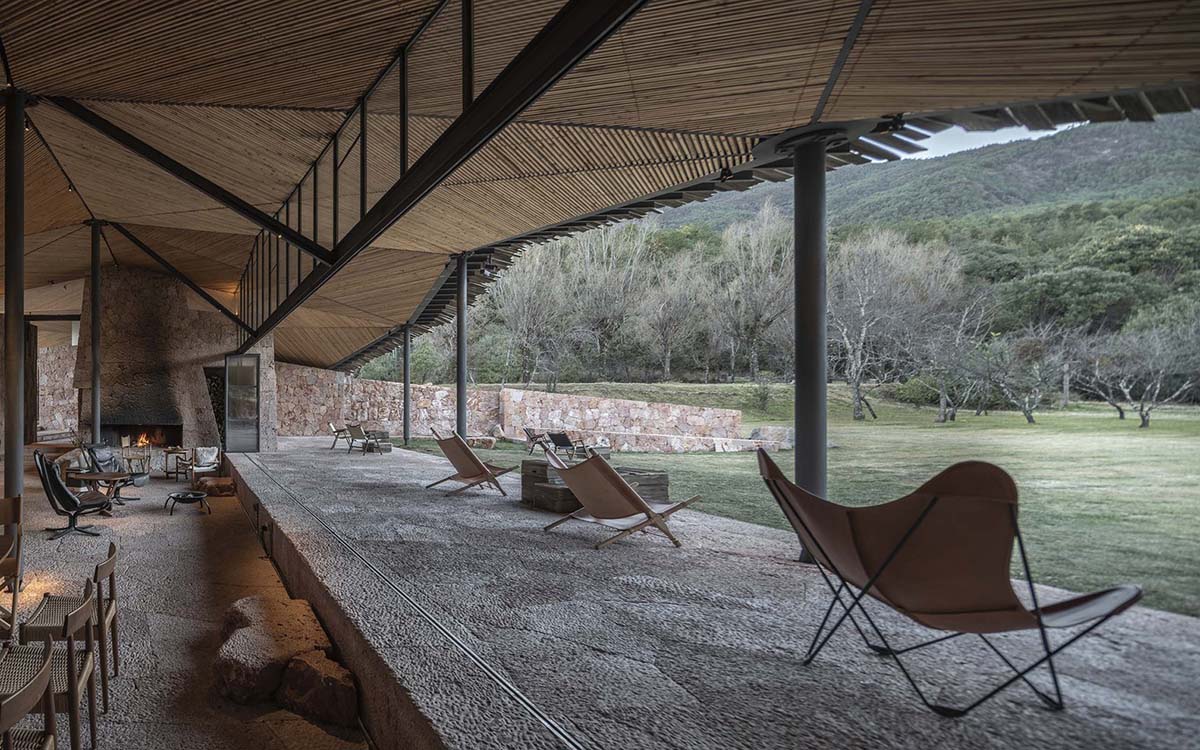
Image © Jie Pan
The building proposes a calm, cozy and perfect space for vacation to find the time for relaxation, and Yunnan itself is in an ideal state of relaxation.
As the architects explain, "from the architect's observation, Yunnan's traditional buildings are built with great freedom: the old craftsmen had no specific design or strict planning."
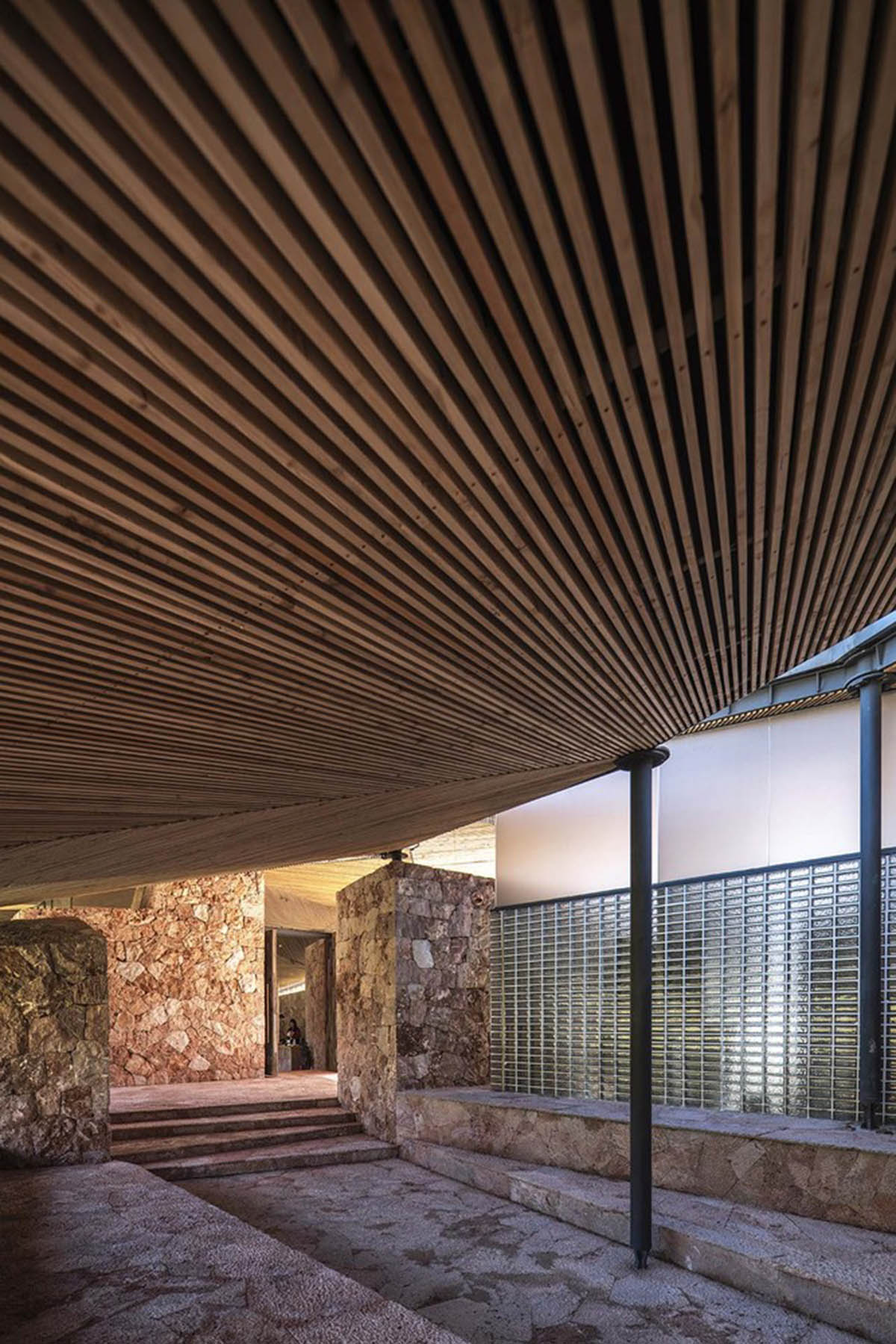
Image © Jie Pan
"They might suddenly pile a stone mill into the wall, and they didn't care whether the edges and surfaces were properly handled...It's all about randomness, imagination, and carelessness. In this context, the architect felt that the project should also be treated a little more relaxed."
For the roof, the studio takes cues from a "cloud", allowing it to wander naturally and find its own boundary: when you come across trees scattered on the site, step back a little, and when there is a gap, stretch in more.
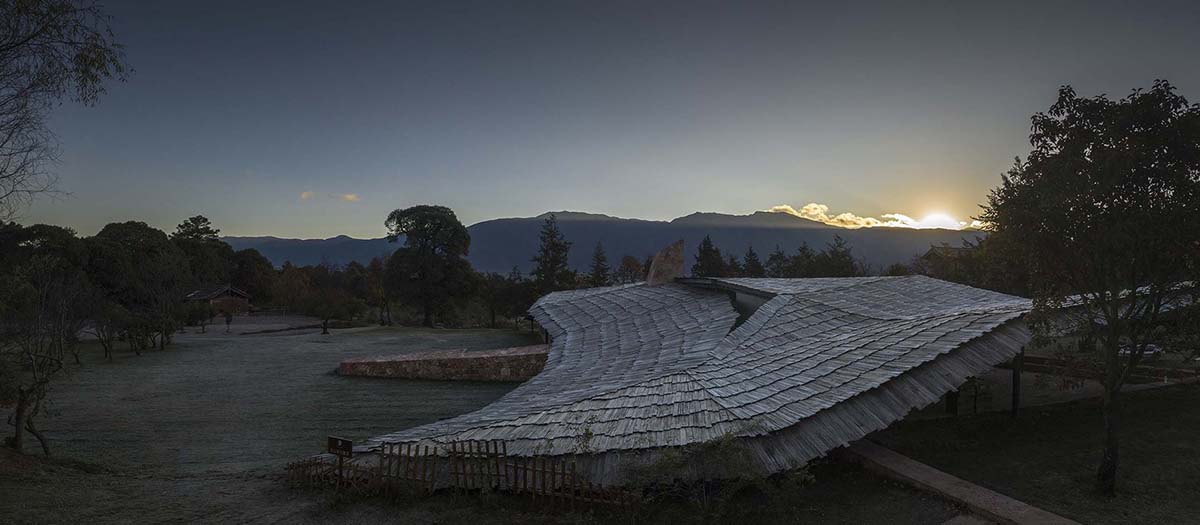
Image © Jie Pan
Due to the flexibility of a cloud, the roof can have more flexibility in its form - naturally expands and stretches, forming the plane form of the building from the overlooking perspective.
"The shadow cast by the "clouds" is naturally the space of the building. Inspired by Kaareklint's 1933 design for the structure of the outdoor chairs in Safari, the architects allowed the building's supporting structure to adjust to the ups and downs of the terrain," the firm added.
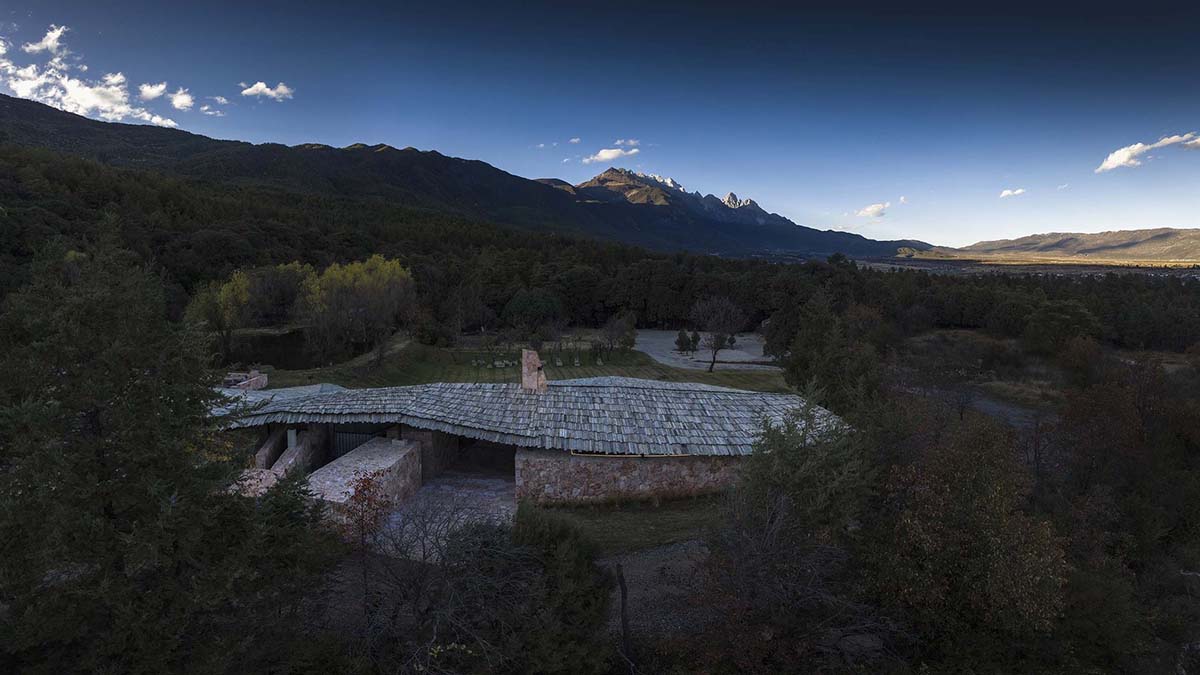
Image © Jie Pan
"The length of each side is neither fixed nor consistent and varies according to site conditions."
They created like a huge tent lying on the grass for the roof structure. This structure also responds to the client's functional orientation of the building.
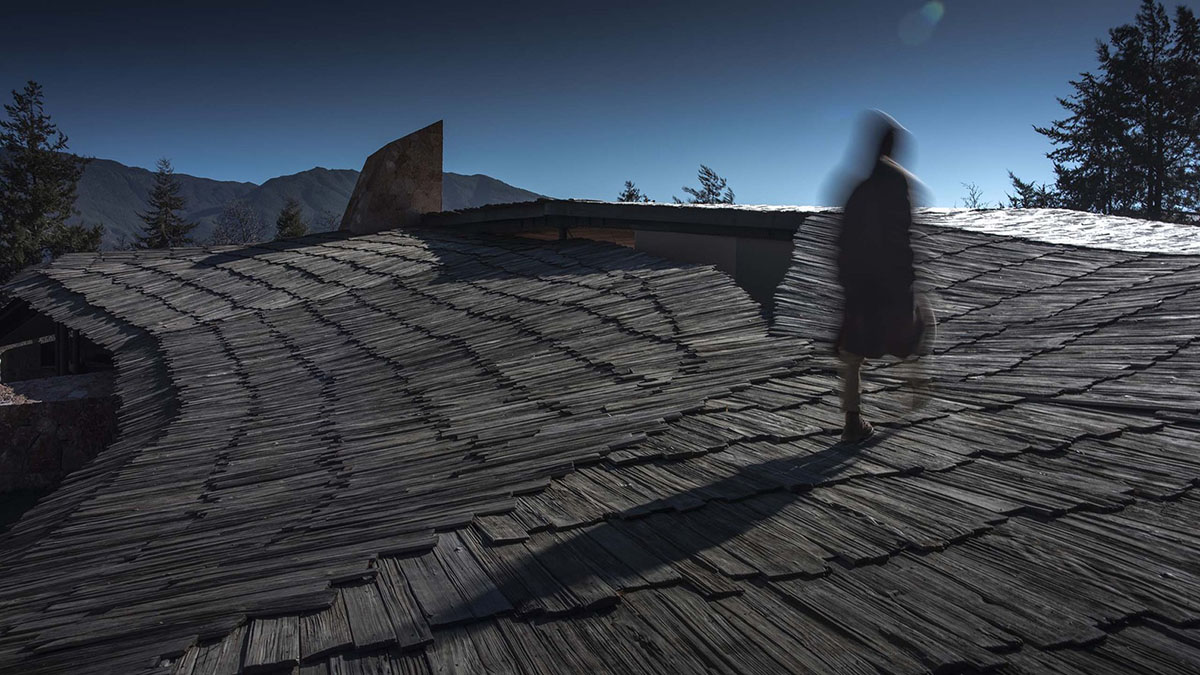
Image © Jie Pan
As the site is surrounded by a combination of flat grassland, natural water, and woodland, the site makes the building a great place for camping in its natural state. "A tent-shaped camp building comes with an outdoor sense."
For the material choice, the architects preferred to use local materials to be able to construct the building comfortably and easy to manage it.
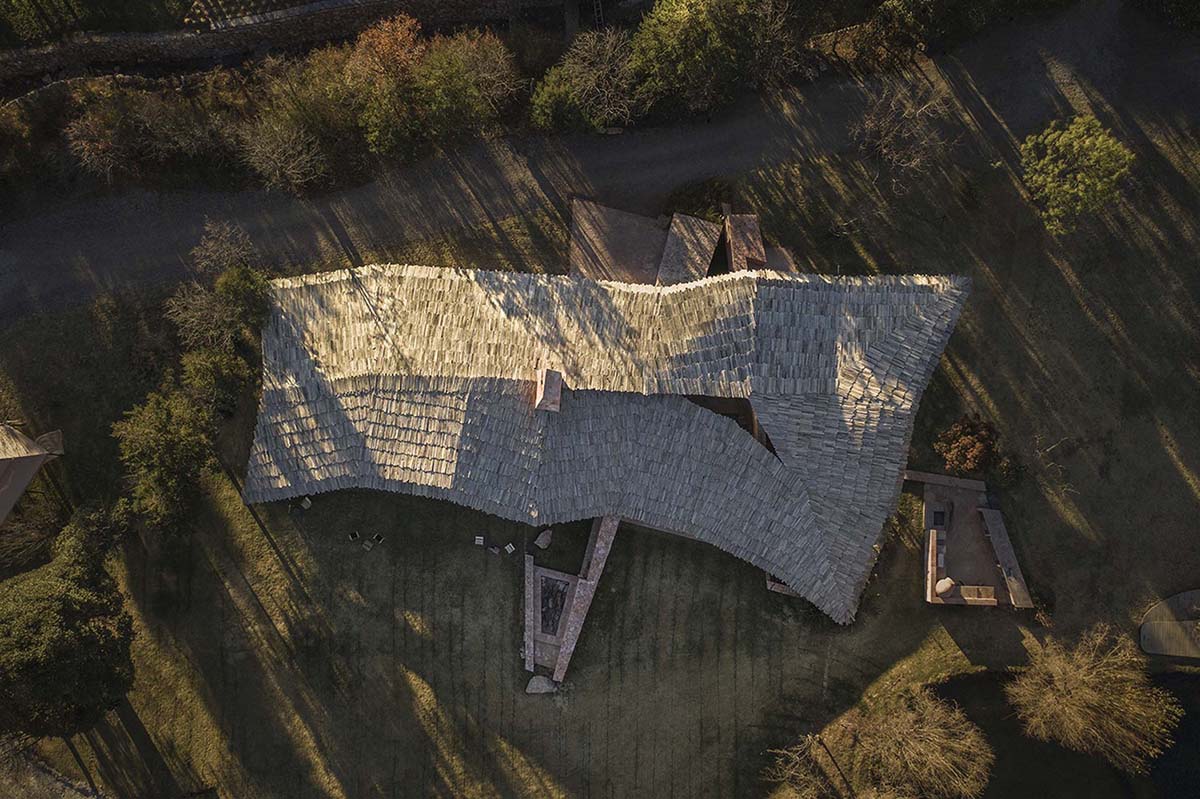
Image © Jie Pan
For the floor and walls, the architects used the same kind of local stone from Lijiang. They didn't use any redundant decoration for the interior and exterior of the building and this application has honestly exposed the original color and texture of the stone.
The stones, produced only in the local village of Guifeng, have a very distinctive flamingo-like pink color.
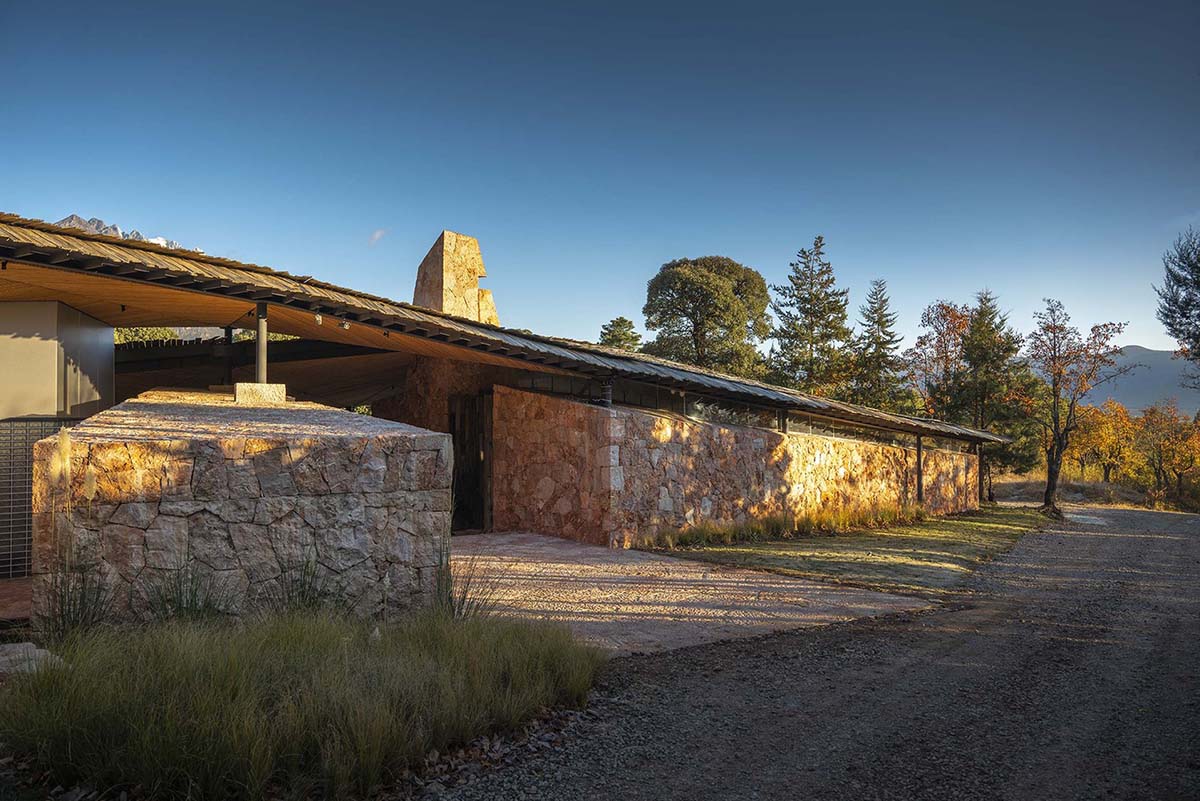
Image © Jie Pan
Due to the extensive use of this stone material, the whole building forms a strong color contrast with the wild Yunnan environment and the rustic charm of the site. The casual name "Red House" has been thus derived from word of mouth among the workers.
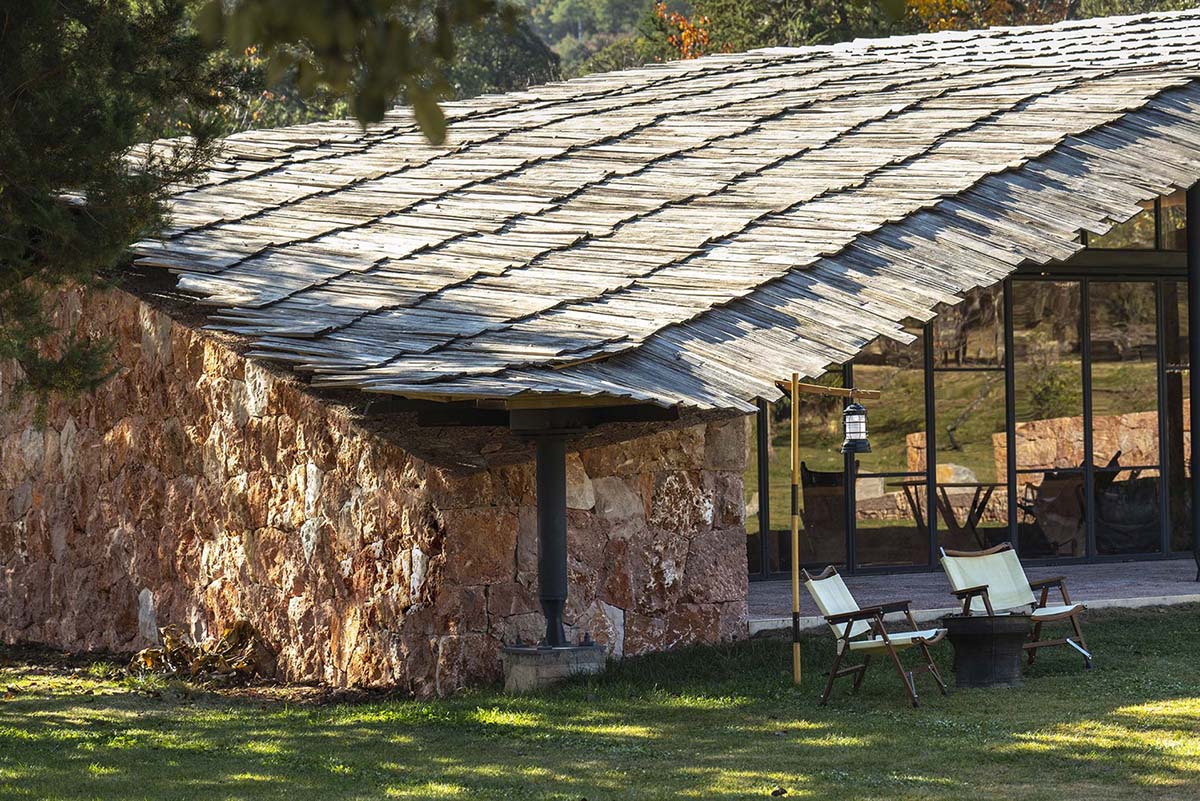
Image © Jie Pan
"When the design team visited the site, they noticed that there were a lot of old pieces of wood on the ground, so they directly recycled them and spliced them into a roof," added the studio.
"The edges are not deliberately aligned, and the manual traces are kept in different lengths, which is another response to the "careless" survival philosophy of Yunnan."

Image © Jie Pan
"However, taking materials “casually” doesn't mean the construction process is easy. In today's highly developed machine operation, in order to maintain the natural texture of the stone, each stone used in the building was chiseled by a mason with a tool," they continued.
According to the architects, the construction of this building is "like cooking molecular cuisine" - it takes local materials and make something that is not local.

Image © Jie Pan
In the end, the architect has used simple materials and uncomplicated methods to make it a modern building that conforms to the local spirit, interacts with nature, and has a sense of design and feel.
As the studio highlights, "the Red House was designed with a better view of the mountains in mind. Spreading the fun of the trip is also an important part of the overall vacation experience."

Image © Jie Pan
"So "how can I photograph the mountains better?" is also very important.A unique place to see the mountains is indispensable from the unique "fancy" view angles of the mountain and a variety of free mountain viewing poses."
Due to the building's flexibility it offers, the visitor of the space can also choose to stay in the way they feel comfortable. "With chairs, steps, and roofs, you may sit or lie, or stand or idle about, follow your inclinations and respect the user's subjectivity adequately."
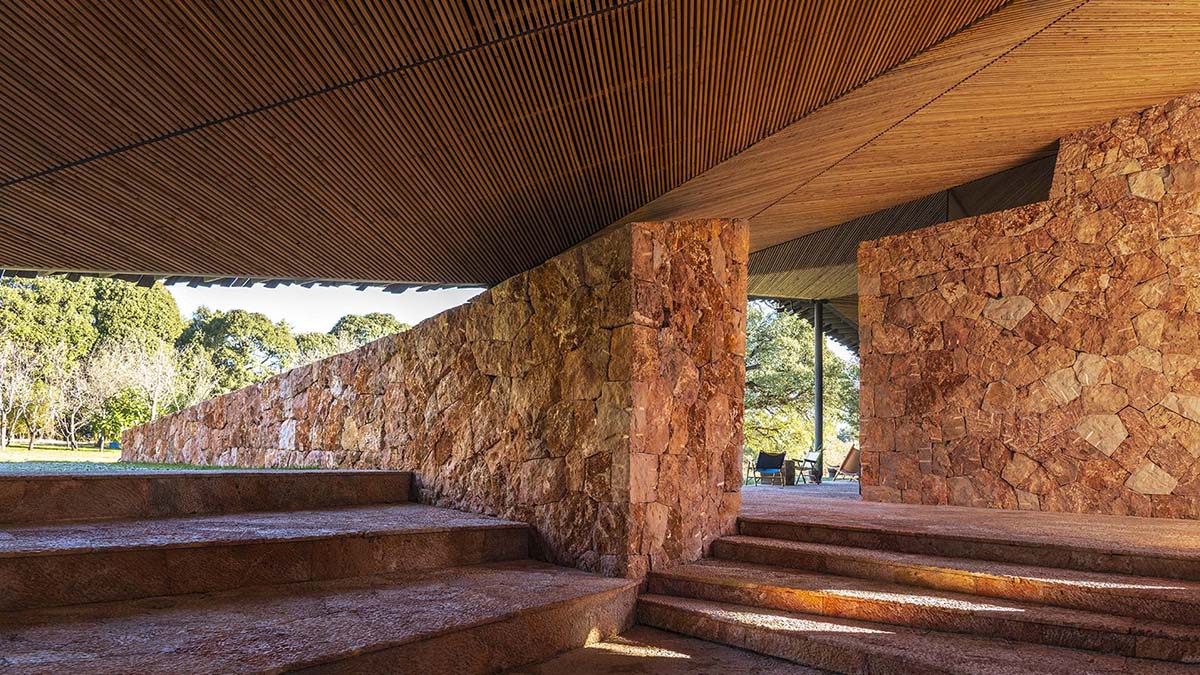
Image © Jie Pan
The bathing space for camping is made of translucent glass tiles. Outside, visitors can see the blurry shapes of people in the bathroom, a bit like an airplane passing through a cloud.
The bathroom environment and the shower system will simulate the effects of rainstorms in nature. There is no doubt that this is an experience full of uncertainty, and the designer is on the "unbridled" verge.
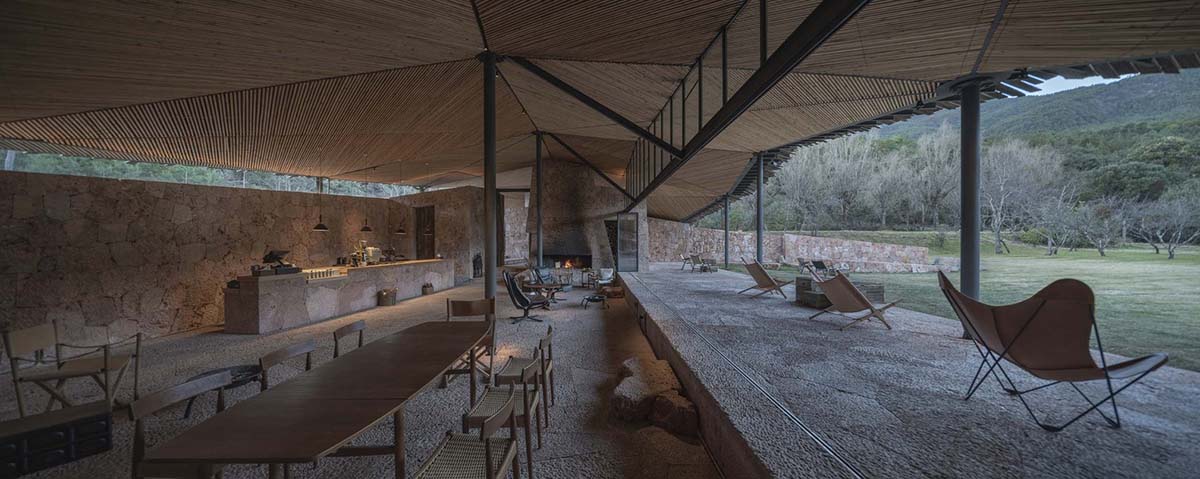
Image © Jie Pan
For this project, the architects' intention was not rigidly to seek and imitate the similarity of Yunnan's local architectural forms. Instead, they designed a building that "looks nothing like the local architecture, but speaks directly to the inner spirit of the local architecture-natural and comfortable and relax as you please."
Returning to the question of "how can we create a relaxing experience for visitors", the builders themselves relax first and wonder if it is also a path.
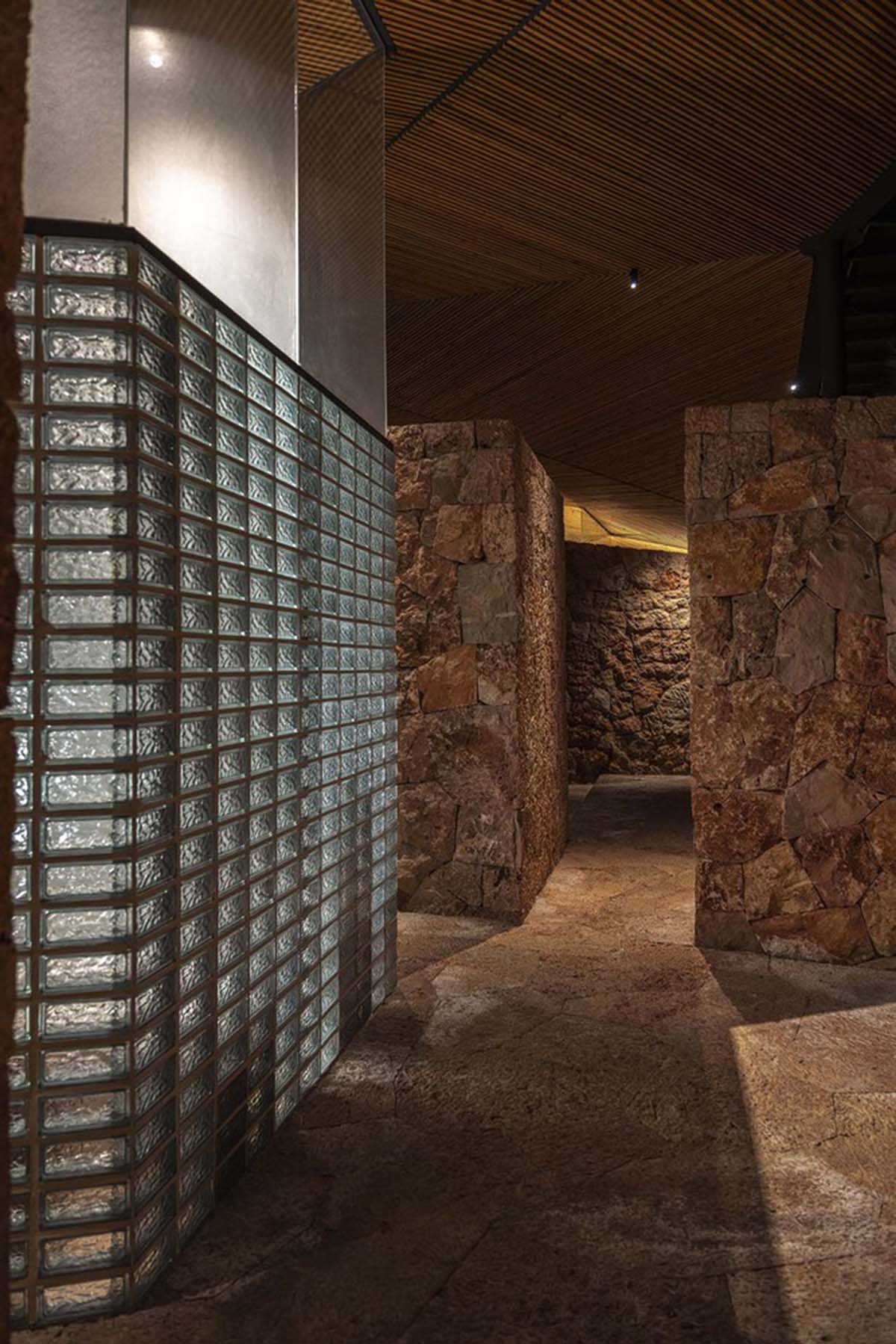
Image © Jie Pan
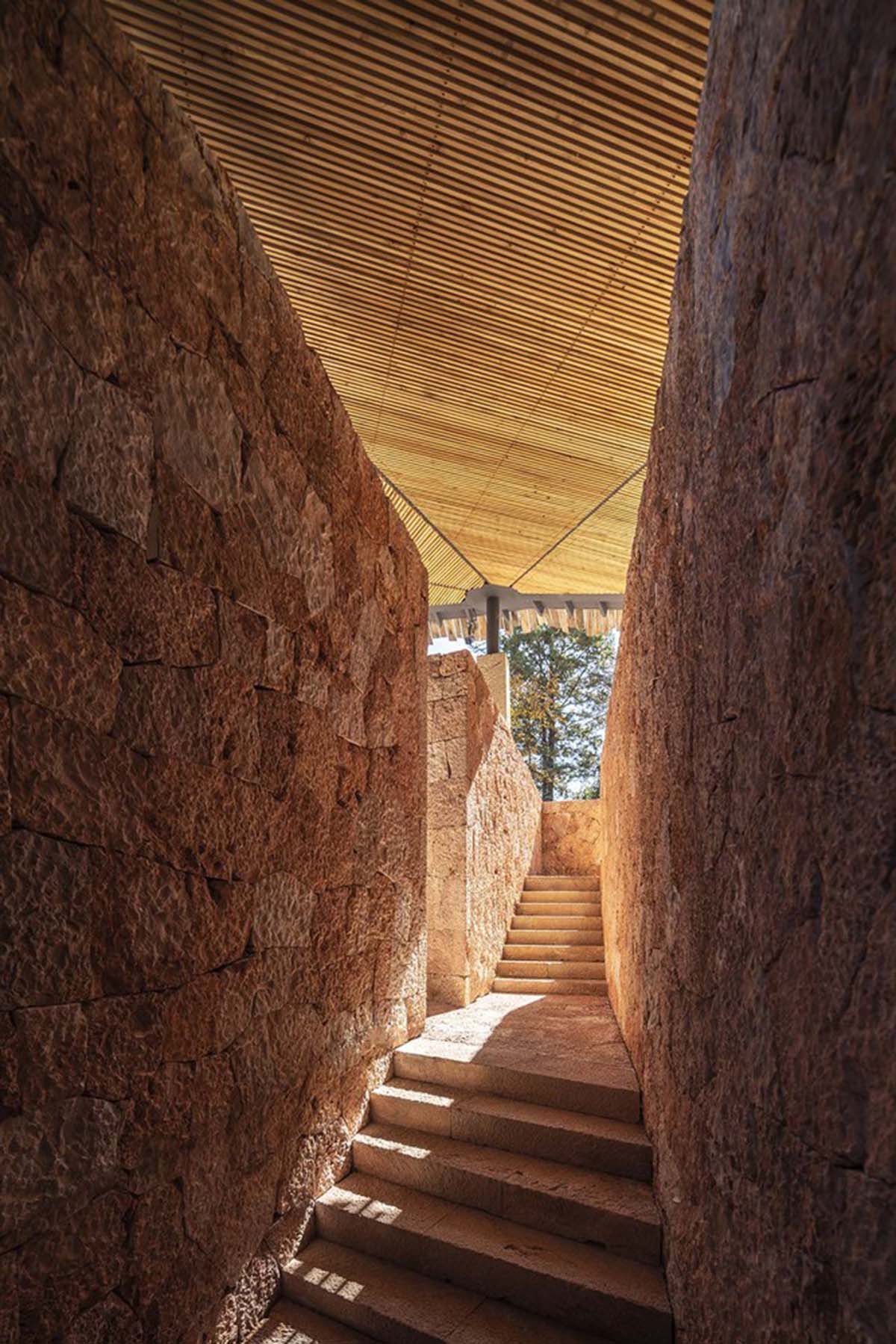
Image © Jie Pan
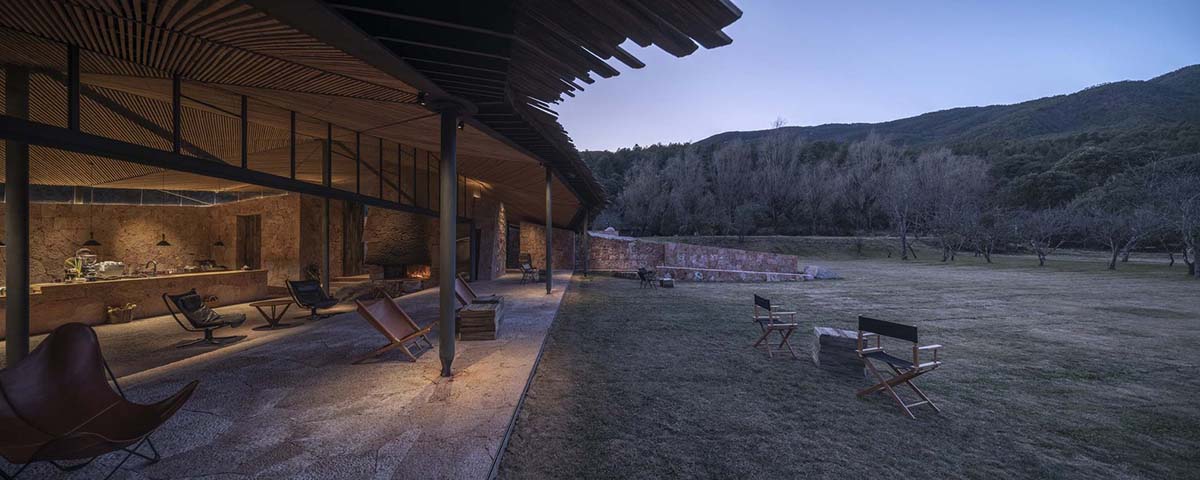
Image © Jie Pan
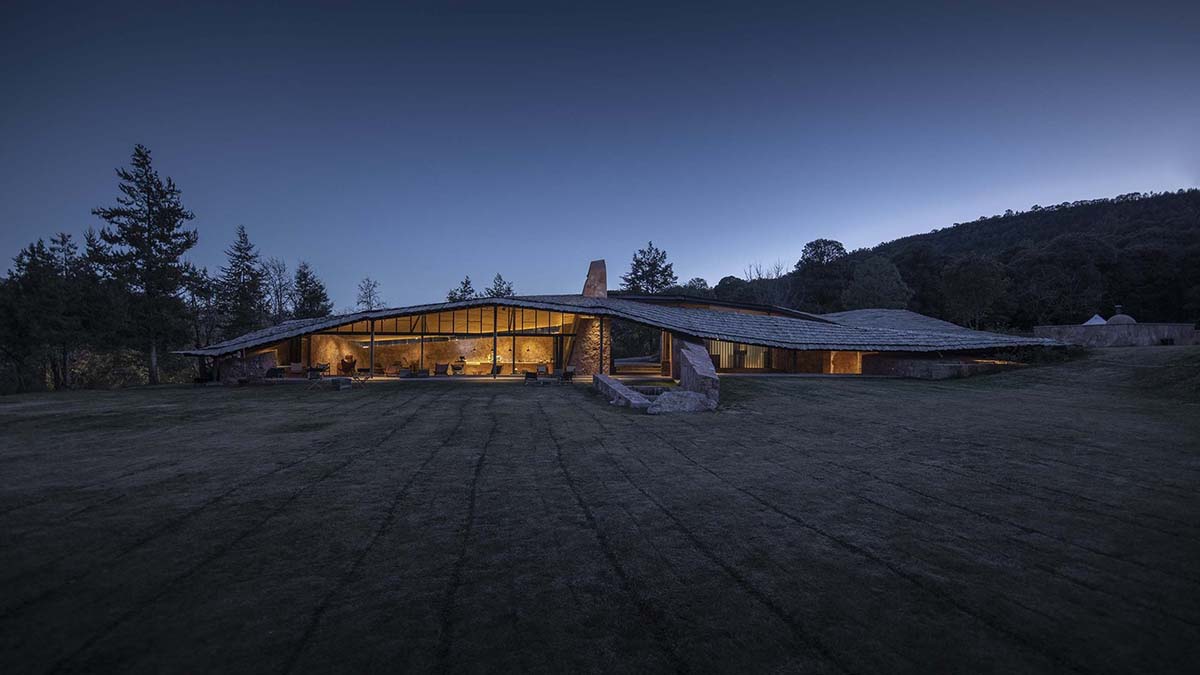
Image © Jie Pan

Image © Jie Pan
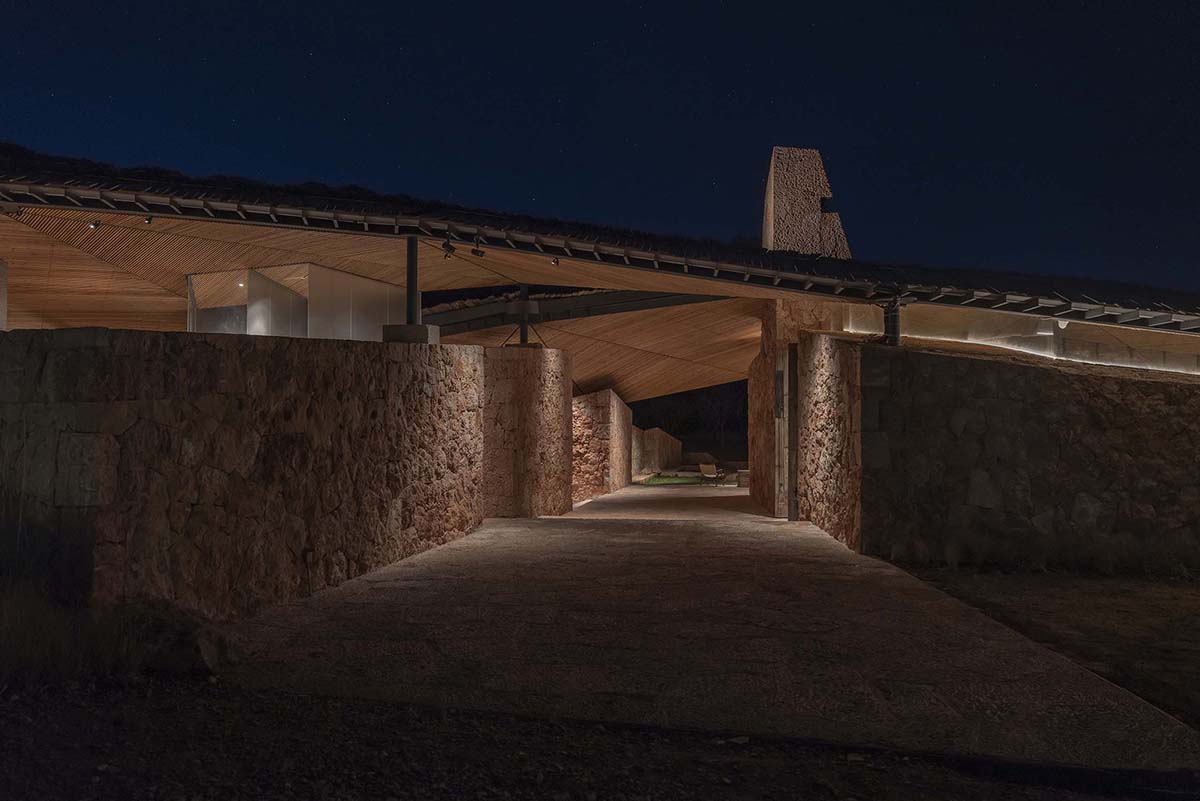
Image © Jie Pan
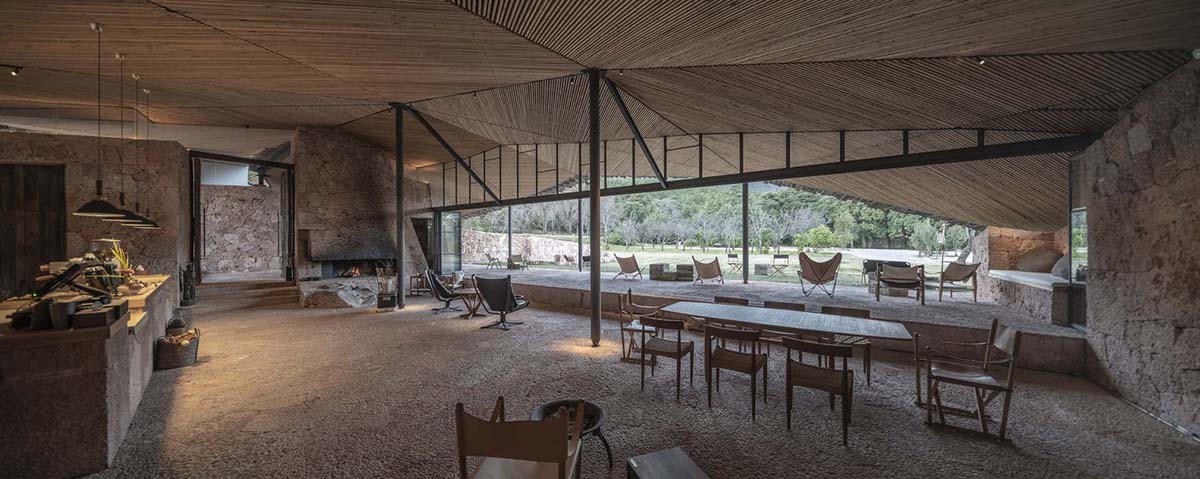
Image © Jie Pan
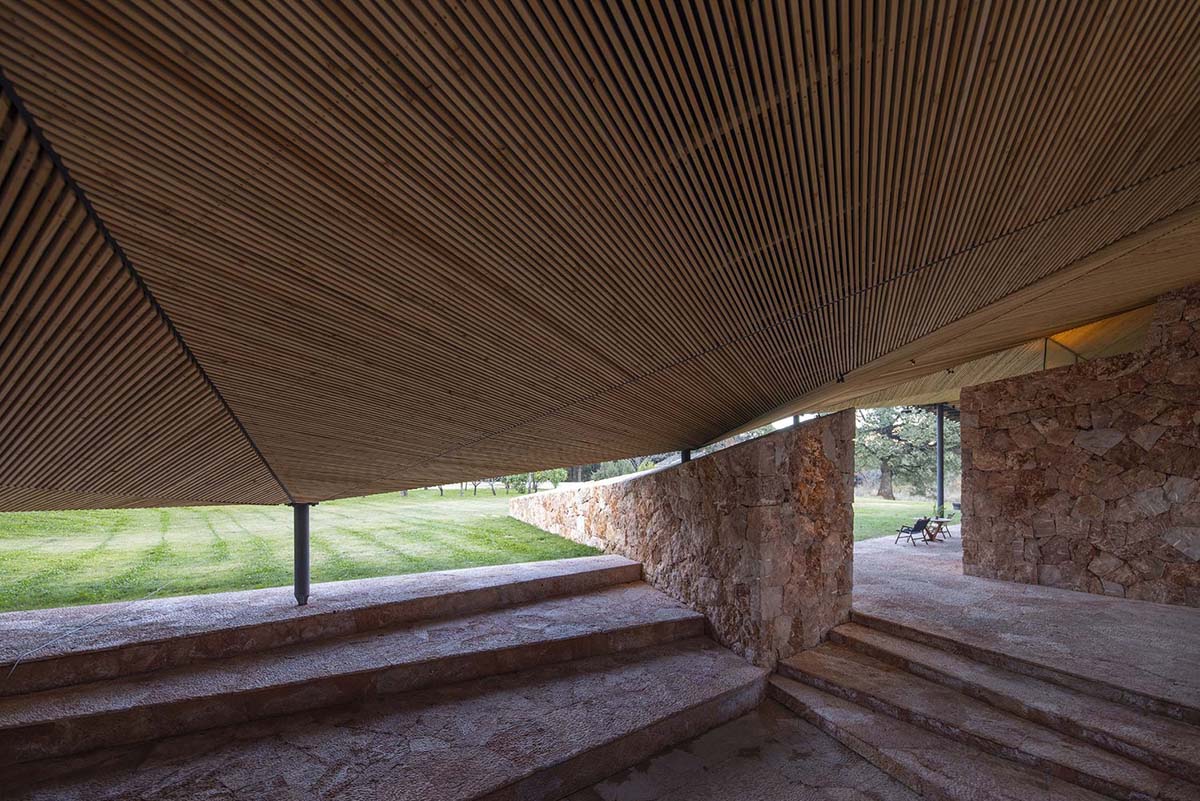
Image © Jie Pan
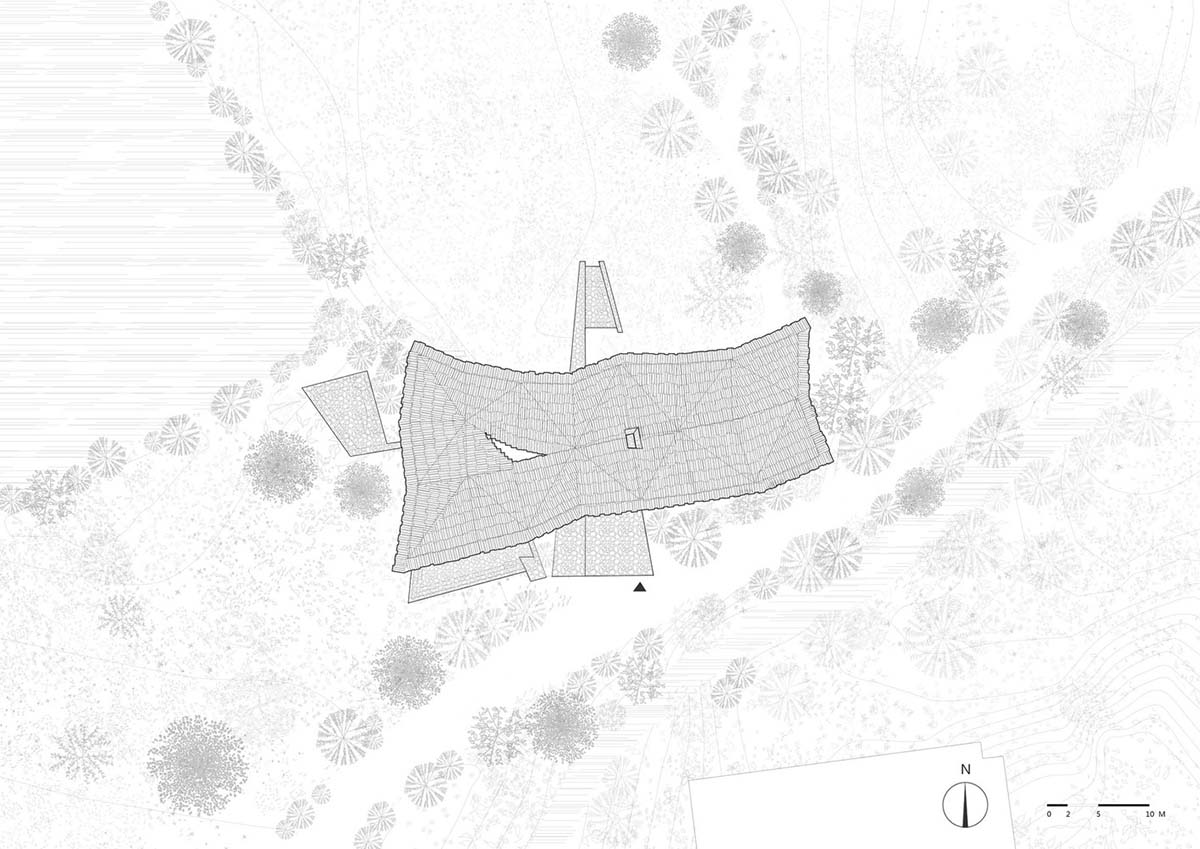
Site plan
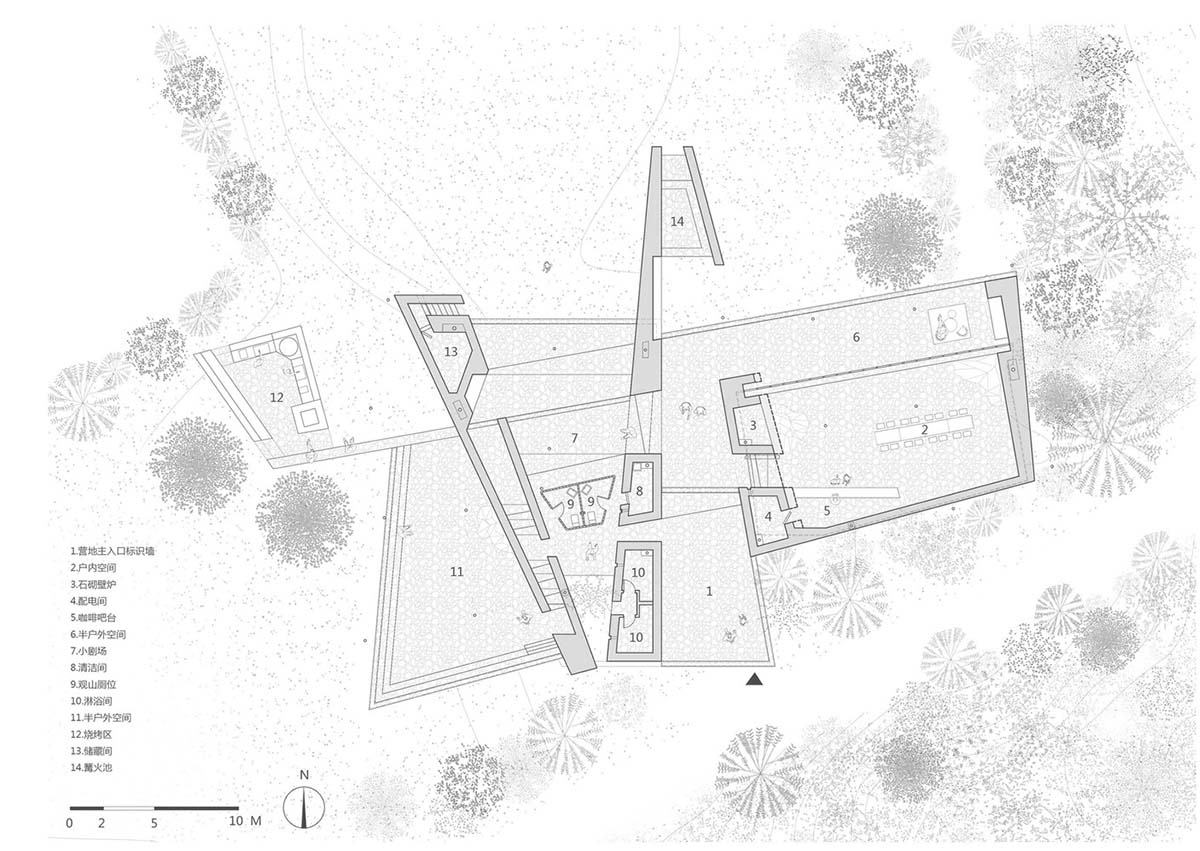
Plan
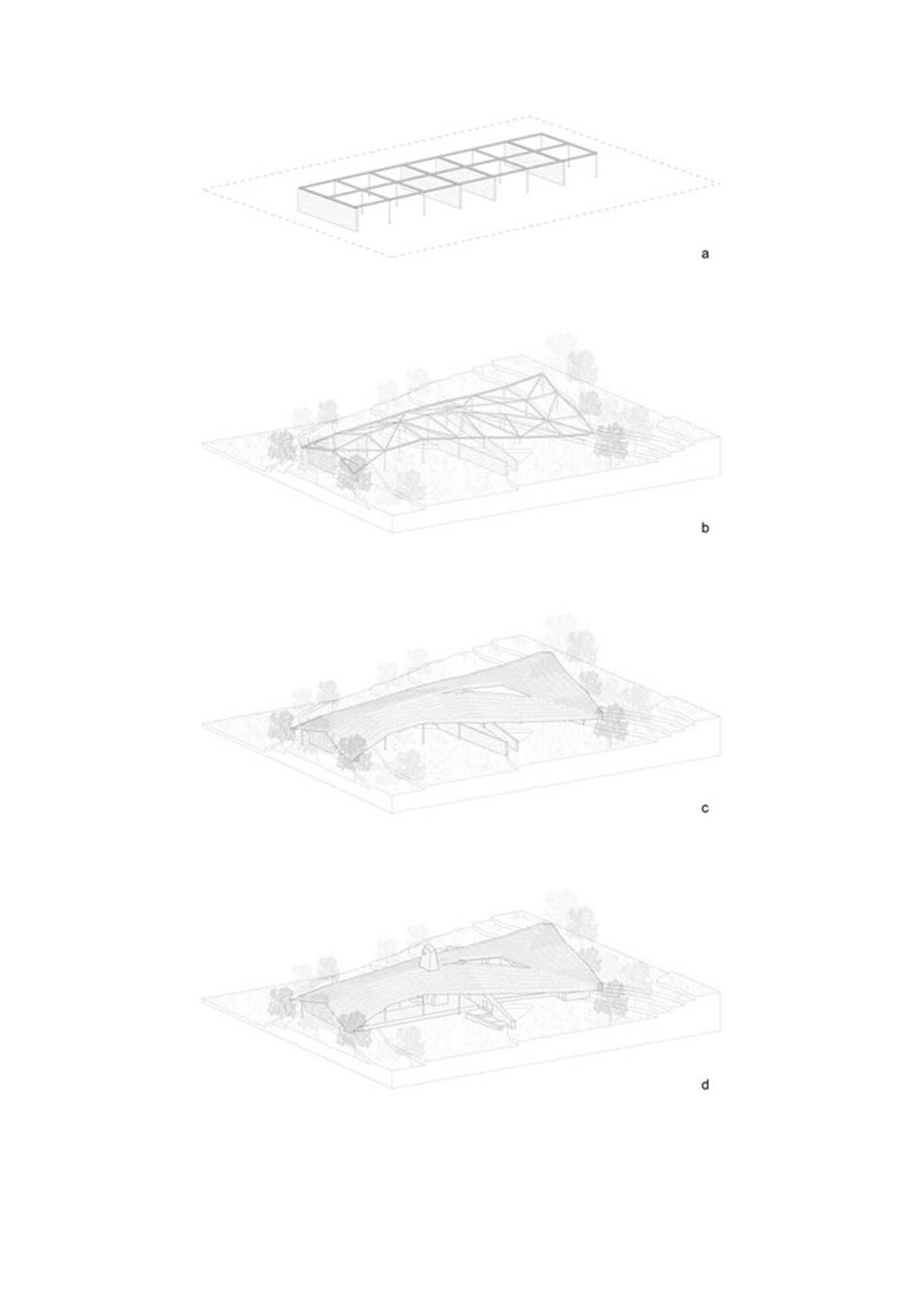
Concept diagram
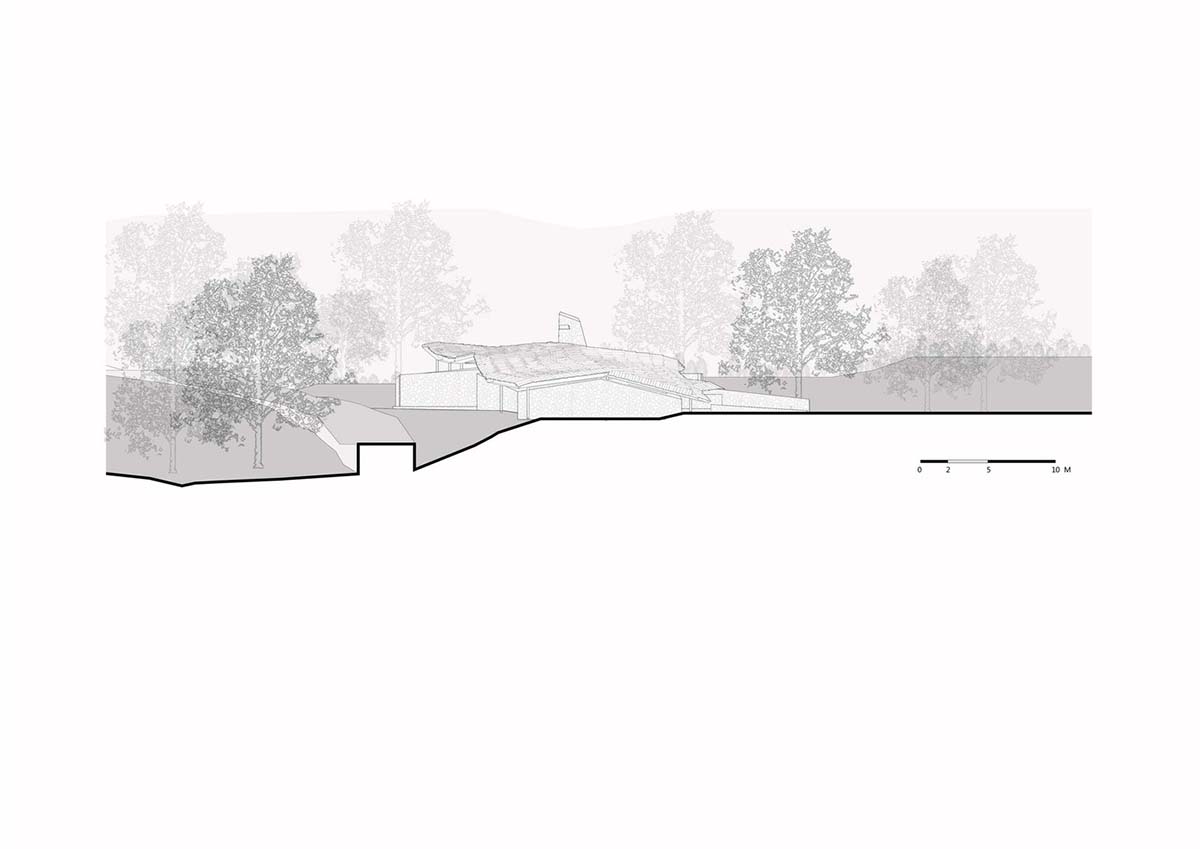
Elevation
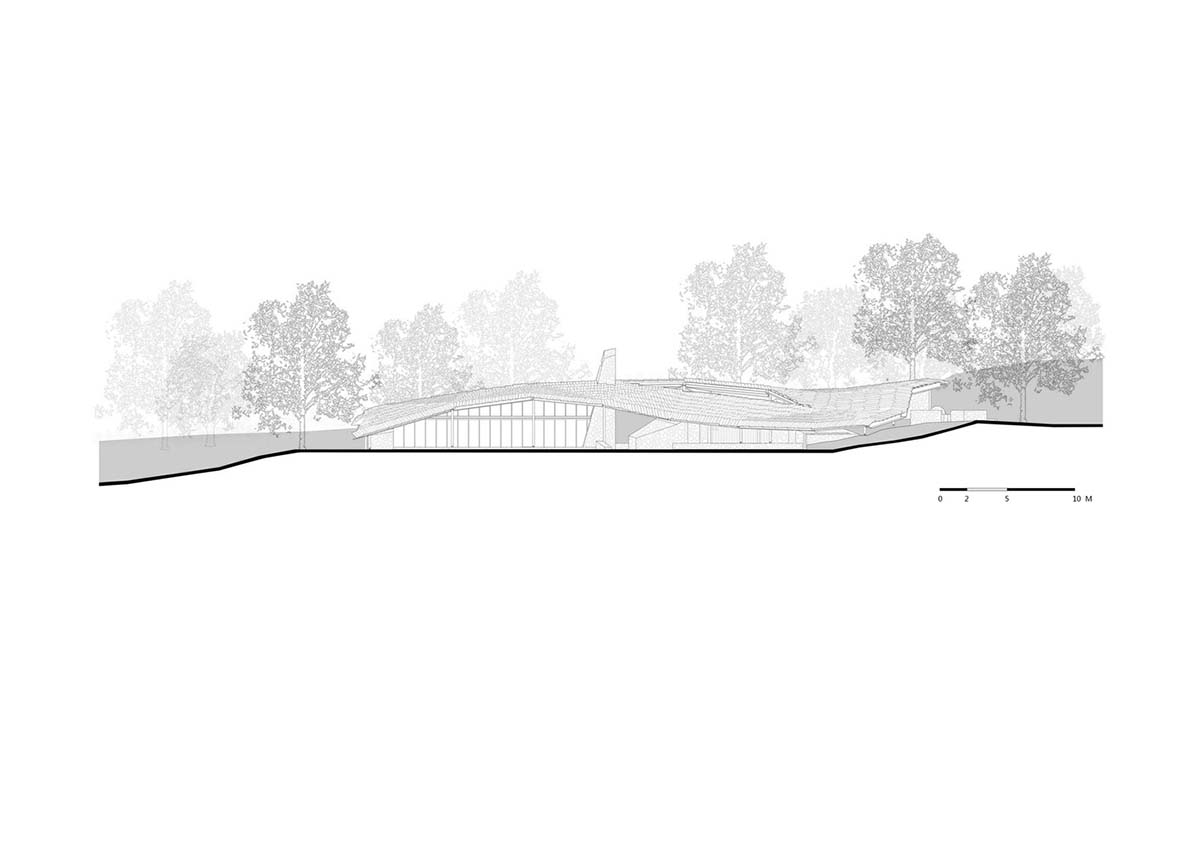
Elevation
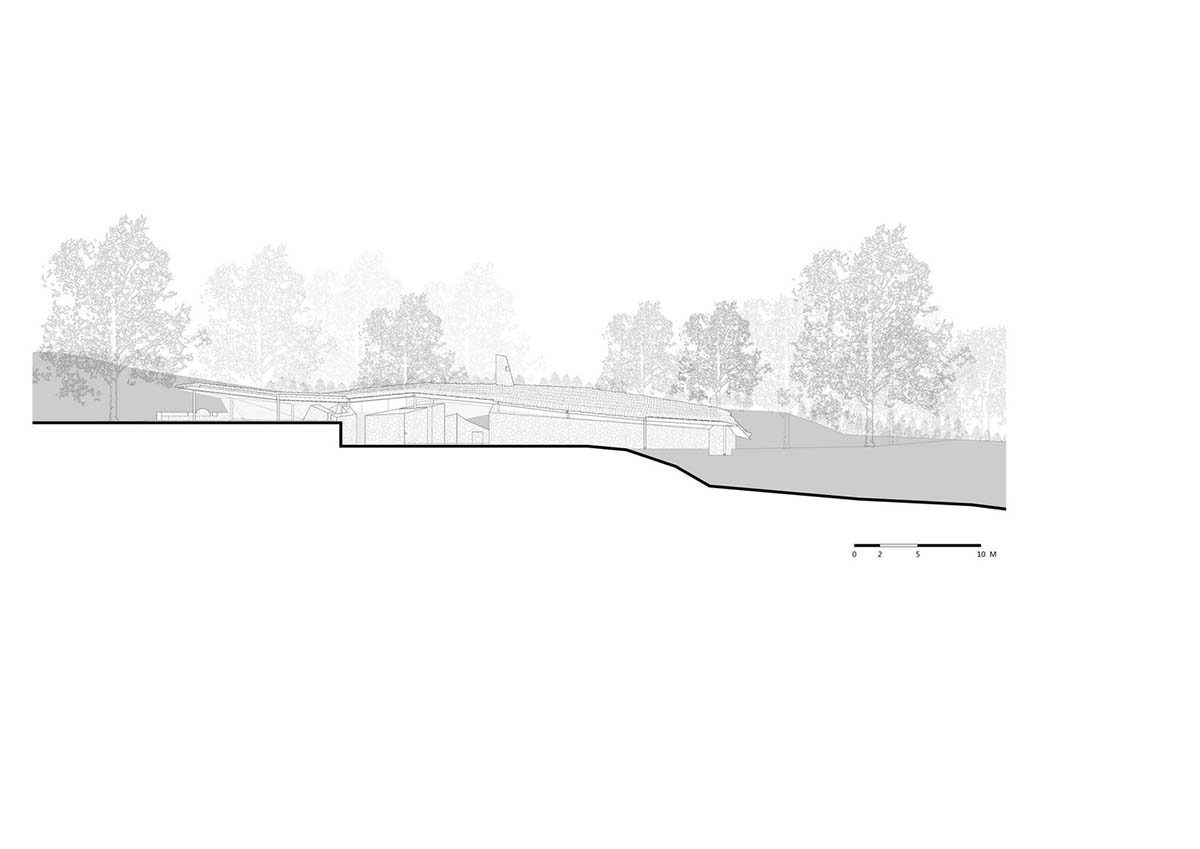
Elevation
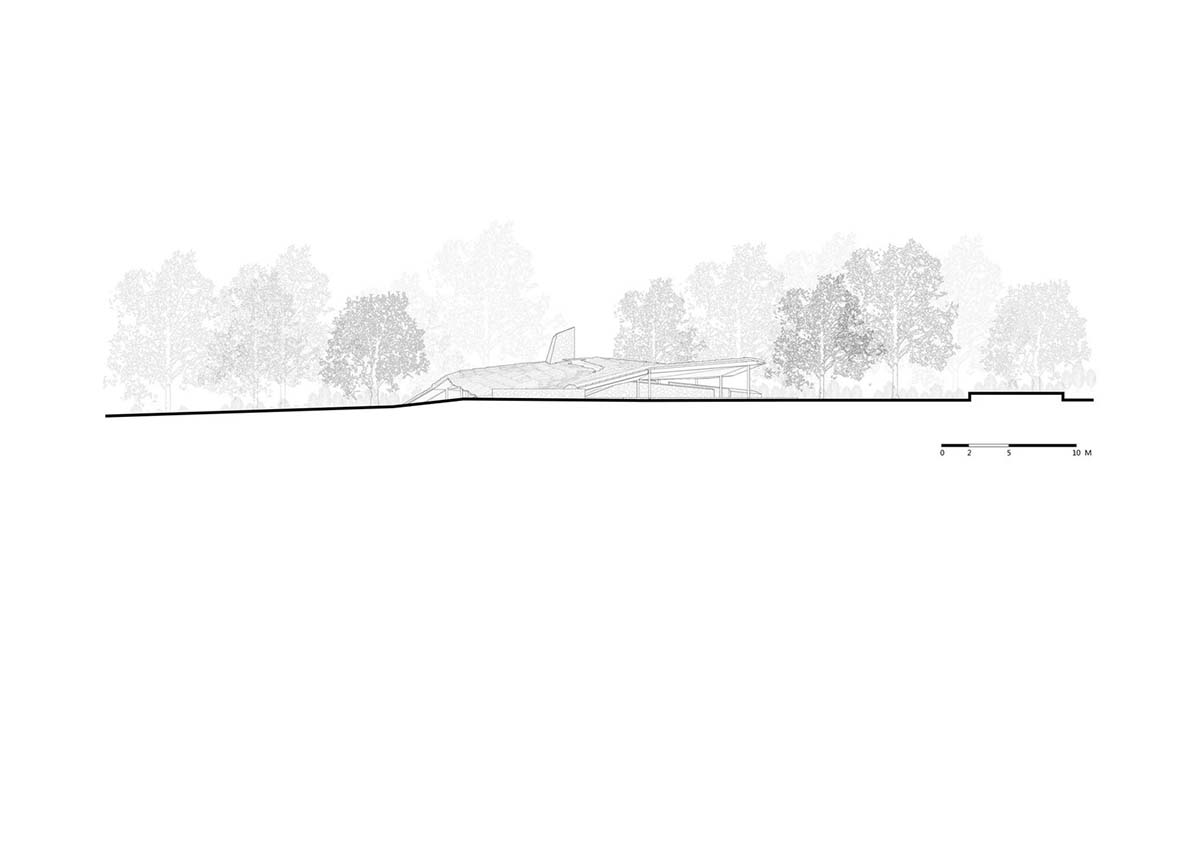
Elevation
Project facts
Project name: Hylla Cloud Nature Experience Center
Architects: gad
Location: Lijiang, Yunnan Province, China.
Size: 538m2
Date: 2020
All images © Jie Pan, Guangkun Yang
All drawings © gad
> via gad
